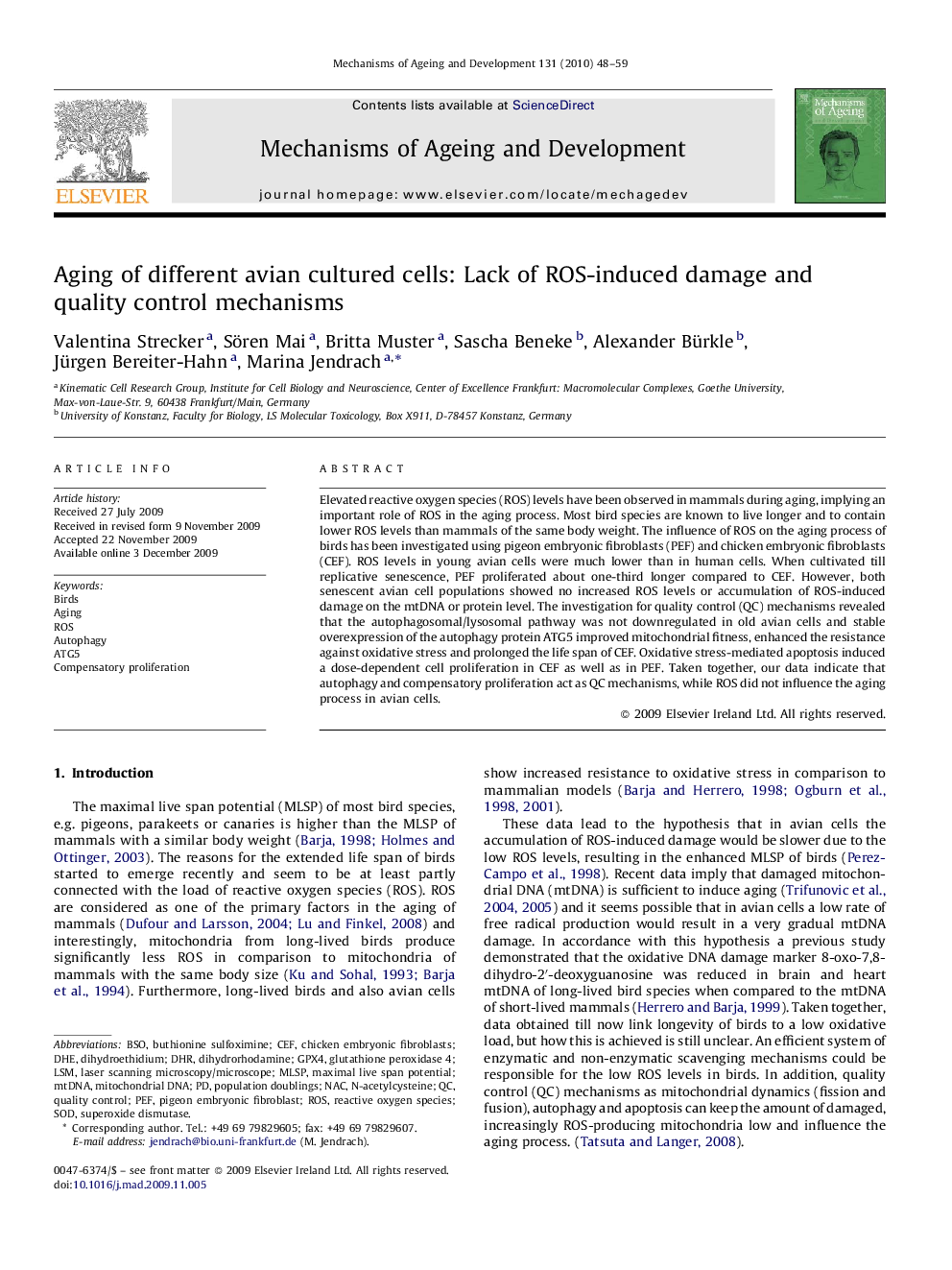| کد مقاله | کد نشریه | سال انتشار | مقاله انگلیسی | نسخه تمام متن |
|---|---|---|---|---|
| 1919503 | 1535649 | 2010 | 12 صفحه PDF | دانلود رایگان |

Elevated reactive oxygen species (ROS) levels have been observed in mammals during aging, implying an important role of ROS in the aging process. Most bird species are known to live longer and to contain lower ROS levels than mammals of the same body weight. The influence of ROS on the aging process of birds has been investigated using pigeon embryonic fibroblasts (PEF) and chicken embryonic fibroblasts (CEF). ROS levels in young avian cells were much lower than in human cells. When cultivated till replicative senescence, PEF proliferated about one-third longer compared to CEF. However, both senescent avian cell populations showed no increased ROS levels or accumulation of ROS-induced damage on the mtDNA or protein level. The investigation for quality control (QC) mechanisms revealed that the autophagosomal/lysosomal pathway was not downregulated in old avian cells and stable overexpression of the autophagy protein ATG5 improved mitochondrial fitness, enhanced the resistance against oxidative stress and prolonged the life span of CEF. Oxidative stress-mediated apoptosis induced a dose-dependent cell proliferation in CEF as well as in PEF. Taken together, our data indicate that autophagy and compensatory proliferation act as QC mechanisms, while ROS did not influence the aging process in avian cells.
Journal: Mechanisms of Ageing and Development - Volume 131, Issue 1, January 2010, Pages 48–59